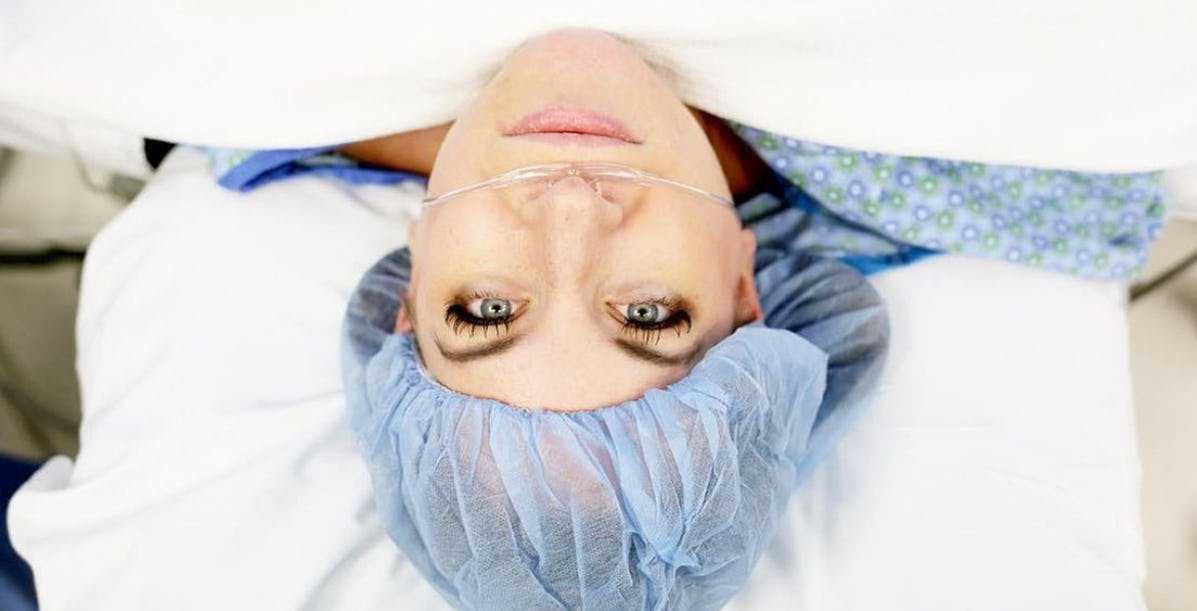There is a ridiculous misconception of c-section where people say c-section is for those who can’t handle pain when giving birth.
Too long has the battle between vaginal and cesarean births been waged, often times with the latter on the losing end. And so, to put an end to the bad rap given to moms who have undergone a cesarean, people have searched far and wide, cornered and drilled every OB to debunk the top 20 myths concerning c-sections.
To everyone who is curious as to what exactly a c-section is, sit back and relax because we have answers. And to every mom who has been to the theatre, only to be told that hers was not a real birth, we are here. And to moms-to-be out there who are wondering whether they should opt for a C-Sec or vaginal birth, we will address those doubts.
Let’s start with a little lesson in biology and history. According to Wikipedia, a c-section is a surgery performed to deliver babies. The procedure takes an average of 45 minutes, usually with the mother completely awake. It is said that the first c-section dates way back to 300 BC.
20. THERE WILL BE NO PPD WITH C-SECTIONS
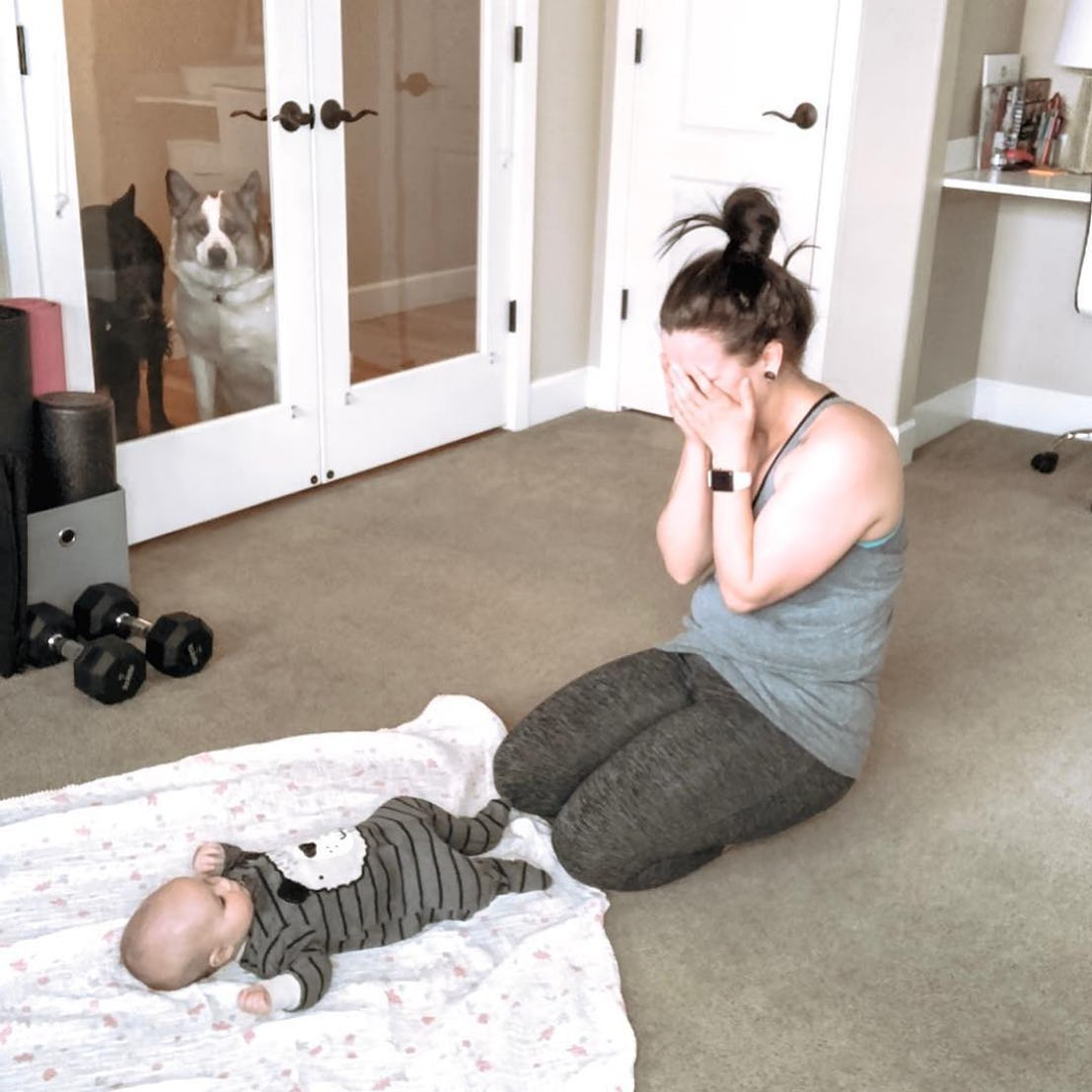
If a woman does not experience real labor pains, then it stands to reason that she will not experience postpartum depression. Say what? Among the many myths associated with c-sections, the so-called absence of postpartum depression ranks the highest. This could not be further from the truth. According to a study published by PubMed, c-sections -be they planned or emergency- actually increase the risk of postpartum depression (PPD). This is attributed to the additional physical stress caused by the surgery. So ladies, do look out for signs of PPD ( mood swings, anxiety, crying spells, insomnia) and never feel ashamed to reach out for help.
19. OUR BODIES WON’T BE ABLE TO PRODUCE MILK AFTER A C-SECTION

Many believe that because c-section moms don’t go through the same rite of passage as moms who undergo a vaginal birth, their bodies will fail to recognize that they have actually given birth and thus will not produce any milk. However, OBs will be quick to point out that our bodies are ‘smart’ and will know whether the bun is still on the oven or has already popped out. Once a body notices the absence of the fetus and placenta, hormonal signals will activate the mammary glands and voila! Mom will produce breastmilk for her little one.
18. NO MORE THAN 2 BABIES VIA C-SECTION

While this may have been the case decades ago, the advancement of science and technology now allows women to have more than 2 c-sections, and those within the possible short span of a year and a half. In fact, Parents.com reports that some women have had up to an impressive 6 c-sections without any complications. Yes, please note the word ‘complication’. In spite of how far medical science has come, there will always be risks and complications when one is cut open and sewn up back multiple times. The risks include injury to the bladder and hysterectomy, both of which rise to a 1% chance or higher after the third c-section.
17. ONCE A C-SEC, ALWAYS A C-SEC
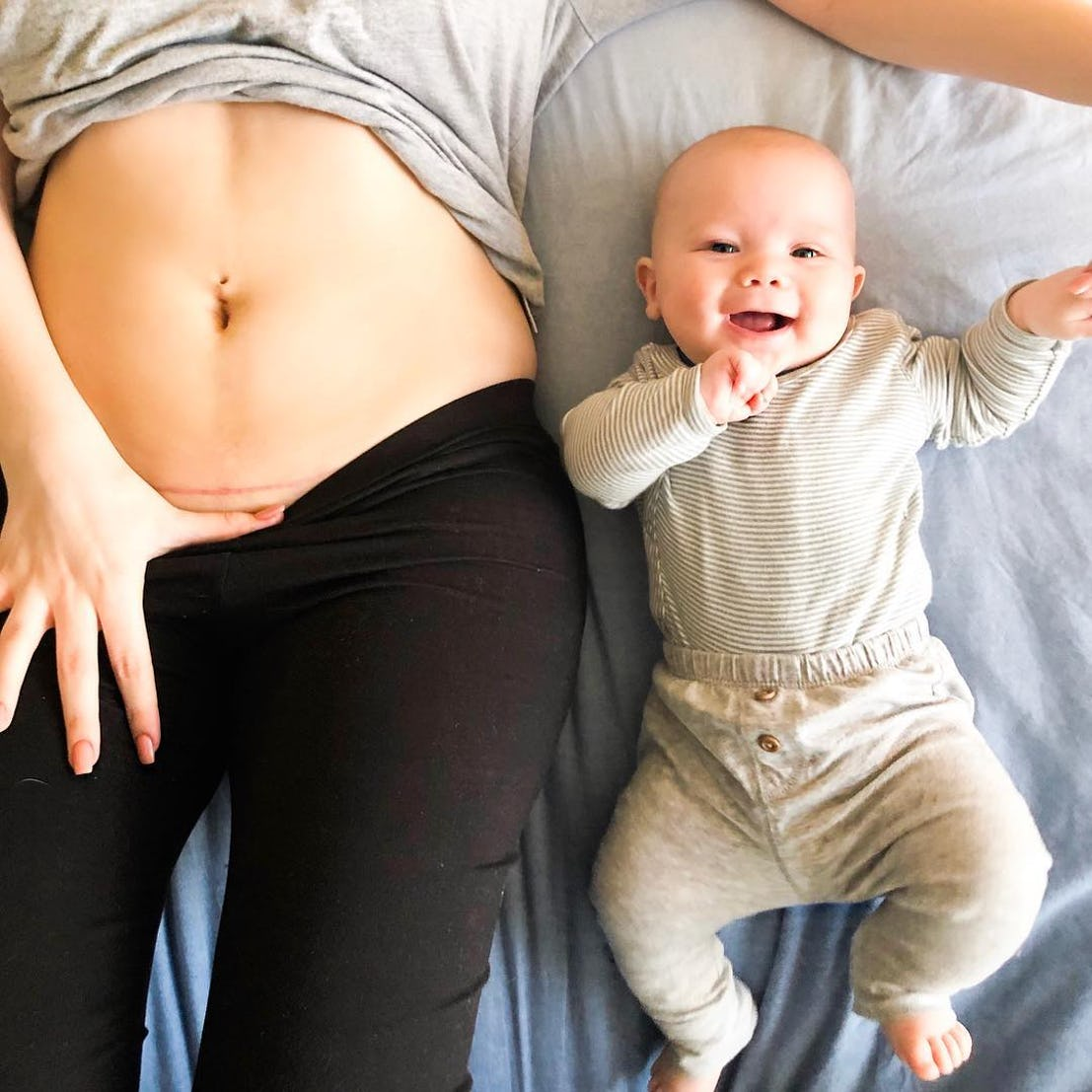
Many women in the past believed that once you’ve had a c-section, there would be no turning back. Simply put, when a mom’s firstborn was introduced to the world via cesarean, the rest of the siblings had to follow suit. While that may have been the case at one point in time, these days women can opt for a vaginal birth even after they have had a c-section. Of course, a clearance from the doctor will be needed to ensure that both mom and fetus are perfectly healthy. But otherwise, if mom’s scar from the previous surgery healed well, then there should be no concern for the incision tearing apart.
16. IT’LL BE TOTALLY PAINLESS

Seriously? Anyone who has undergone any form of surgery (big or small) can tell us that there will always be some form of pain involved. So for moms who are contemplating elective surgery, please note that it does come with a baggage of pain. From the epidurals to the first attempt getting out of the bed. We wouldn’t wish it on anyone. Plus, the recovery can be difficult, especially if mom has other children in the house. Even more so if the kids are still toddlers who want to cling to mommy 24/7. So be prepared, cesarean surgery is no walk in the park.
15. IT’S NOT A REAL BIRTH
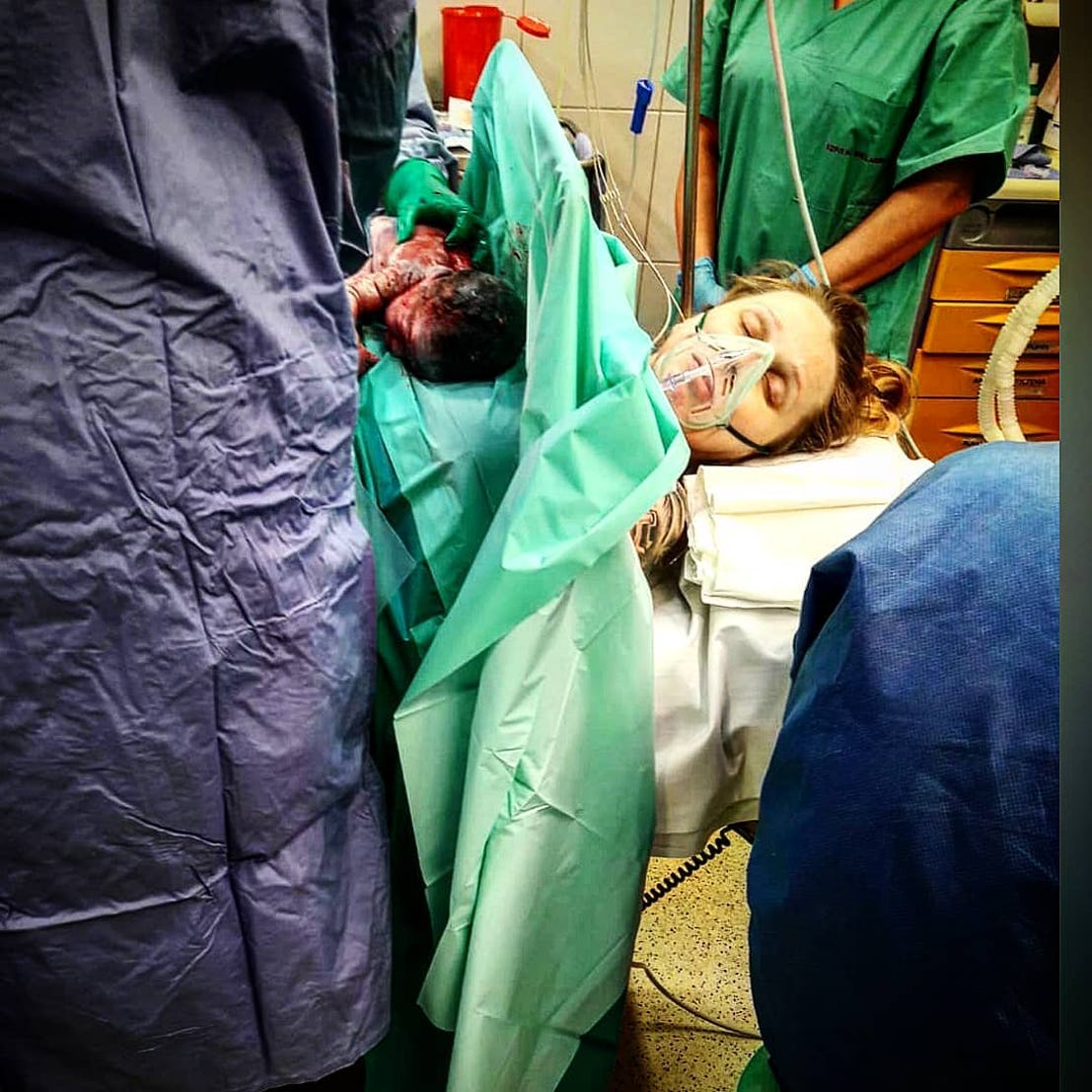
Excuse us while we laugh our heads off at this one. Many still believe that motherhood is measured by how we give birth and that just because a baby is pulled out of the womb via an incision (a long incision, mind you), then the woman did not ‘give birth’ and is therefore not fit to be called a mom. But please remember, motherhood is not measured by how a woman gives birth. But since we are comparing, then wouldn’t the risks attached to going under the knife and having one’s internal organs rummaged before being sewn back by a complete stranger constitute an even more harrowing experience? Regardless of how the child came into the world, so long as baby and mom are healthy, then why should anyone object?
14. MOM AND BABY WILL HAVE TROUBLE BONDING

Pediatricians and OBs will have us know that mom and baby should have no problem bonding, regardlessly of how the baby came into the world. For the past few months, the baby was growing in mom’s womb and listening to her soothing voice and swaying to her movements. When baby comes into the world, the first person that they will naturally want to bond with will be their mom. Mom is the person they are closest to and the one with whom they feel the most love and protection. So unless the baby and mother are completely separated for a long time after the birth, neither mother nor child should have any issue bonding.
13. A C-SECTION IS A LOT EASIER THAN A VAGINAL BIRTH

While this may ring somewhat true for scheduled a cesarean. Moms are mentally and emotionally ready for what is to come as their doctor has given them a walk-through. During the procedure, there is often music in the background and the OBs chit chat in the background. The same cannot be said for an emergency c-sec. Everything will be rushed and mom will have no time to mentally prepare to face it all. In fact, the doctors and nurses will probably be frantically rushing through the procedure to save mom and child and little to no briefing will be given. Not to mention, surgeries will always run more risks than a healthy natural birth.
12. THE RECOVERY TIME IS ABOUT THE SAME
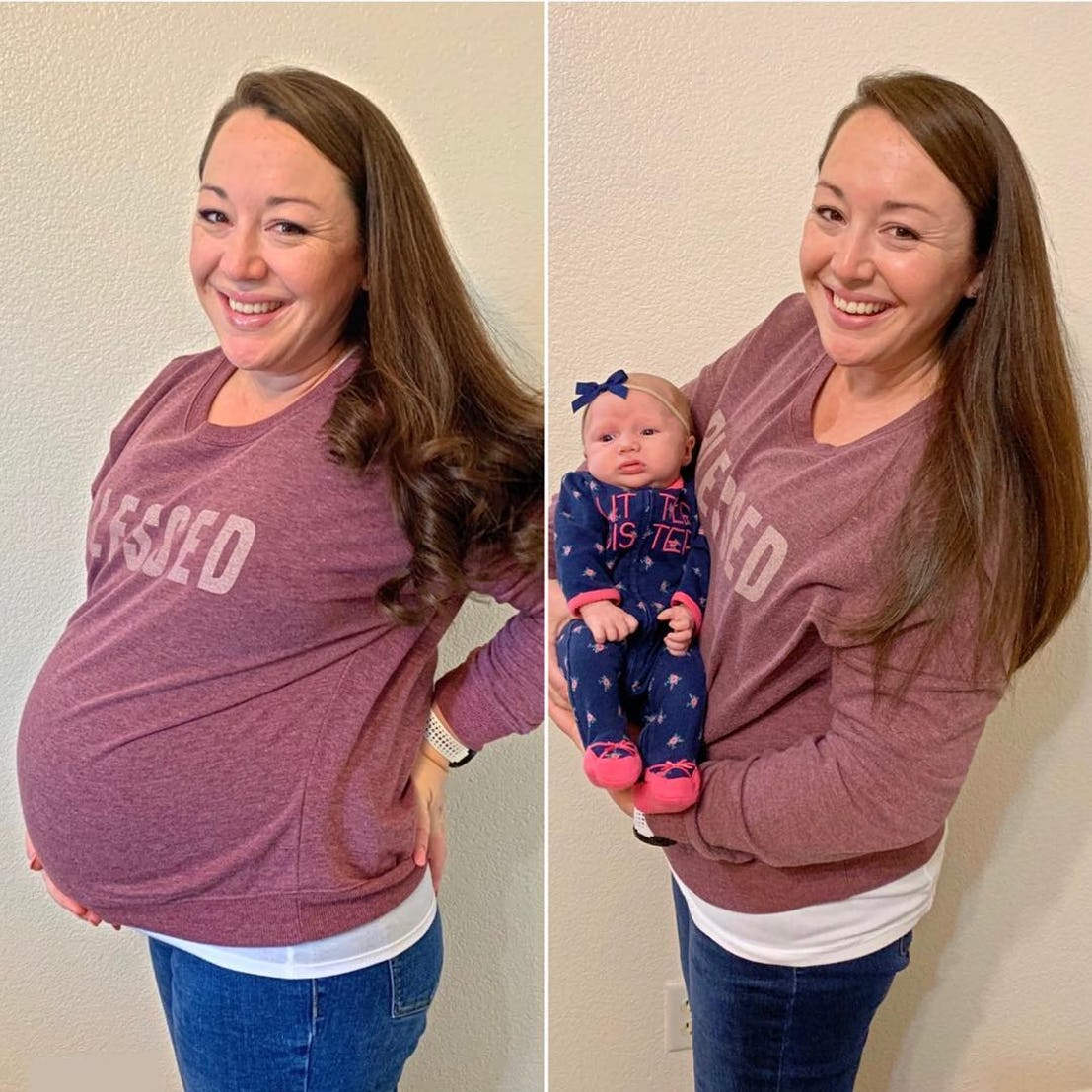
It takes an average of 3-6 days for mom to start feeling like herself again after giving birth vaginally and an average of 2 weeks for C-Sec moms to start moving normally again. While the recovery process for both is undeniably difficult, the fact that surgery was involved and that abdominal muscles were severed means that cesarean patients will require a longer time to literally get back on their feet again. No wearing heels looking stunningly gorgeous standing at the doorstep of St Mary’s Hospital a mere 7 hours after labor for these moms. They’d be considered lucky if they start to even feel anything below the waist by then.
11. A C-SEC MOM CAN CHOOSE THE DATE OF HER BABY’S BIRTH

There is a common belief that parents can choose the date of birth of their child with a scheduled c-sec. While the notion makes sense, a birthday is still determined by a few factors. For one, the date chosen should fall after the 39th week (if possible). Verywellfamily.com notes that babies born before the 39th week are usually more prone to health problems like respiratory distress, hypoglycemia, jaundice and even developmental delays. So by postponing the baby’s arrival until after week 39, parents are giving their baby the best possible start. Other factors to consider are school holidays (kids love it when their birthday falls on a break), special anniversaries and of course the OB’s schedule.
10. BABIES DELIVERED VIA C-SECTION WILL HAVE MORE HEALTH COMPLICATIONS
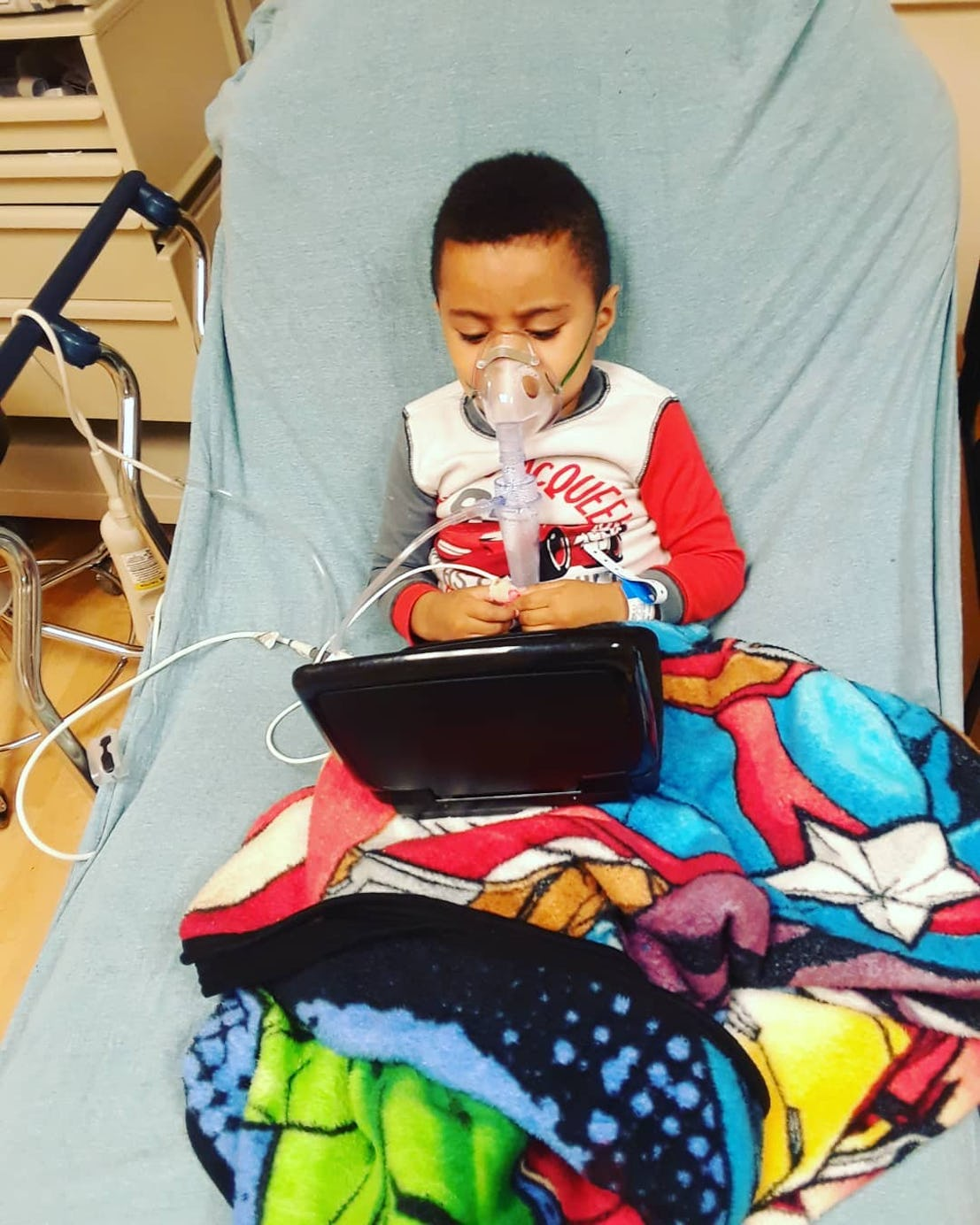
A c-section is more often than not a life-saving procedure that many parents are thankful for. However, many parents also claim that children born via cesarean usually end up with more health complications compared to babies who were born via vaginal birth. While it’s fair to say that kids born via cesarean are more likely to develop chronic diseases like asthma and diabetes later in life, Jan Blustein, M.D, Ph.D. of New York University iterates that more research is needed to determine if other factors come into play. So let us all approach this topic with caution and not scare off any c-section candidates; the surgery saves countless lives.
9. MOM’S VAGINA WILL NOT LOOSEN WITH A C-SEC

According to Dr. Seth Plancher, OB-GYN of Garden City New York, many women opt for a c-section to preserve vaginal tightness. The logic is that because there won’t be any pushing (unless, of course, the c-sec was a last minute emergency procedure), the vagina will be unaffected. The answer to this myth is not a simple yes or no. After a cesarean, our vulvas will still generally look the same. But because the muscles around the pelvic floor have already been stretched for the past nine months, the vagina will not be as elastic as that of a woman who has never given birth before. Think potato sack vs trampoline. Heh.
8. NO BONDING WITH SPOUSE ALLOWED FOR 6 MONTHS

Perhaps mom and dad had been extremely good the past 9 months, coming close to taking vows of celibacy. So when baby finally pops out of mom’s womb, it is only natural for both mom and dad to want to bond and make up for all the lost time spent ‘apart’. But wait, didn’t mom just undergo surgery? Has her incision and -more importantly- cervix healed? Should the vow of celibacy be further extended? Nooooo! What do you mean mom and dad will have to bunk in separate rooms for the next six months? Have no fear, according to the OBs and GYNs that we grilled, three months is plenty of time for mom to properly heal and get her groove back. Still, as with all things, we should take it one step at a time and not rush.
7. MOMS ARE UNCONSCIOUS DURING C-SECS
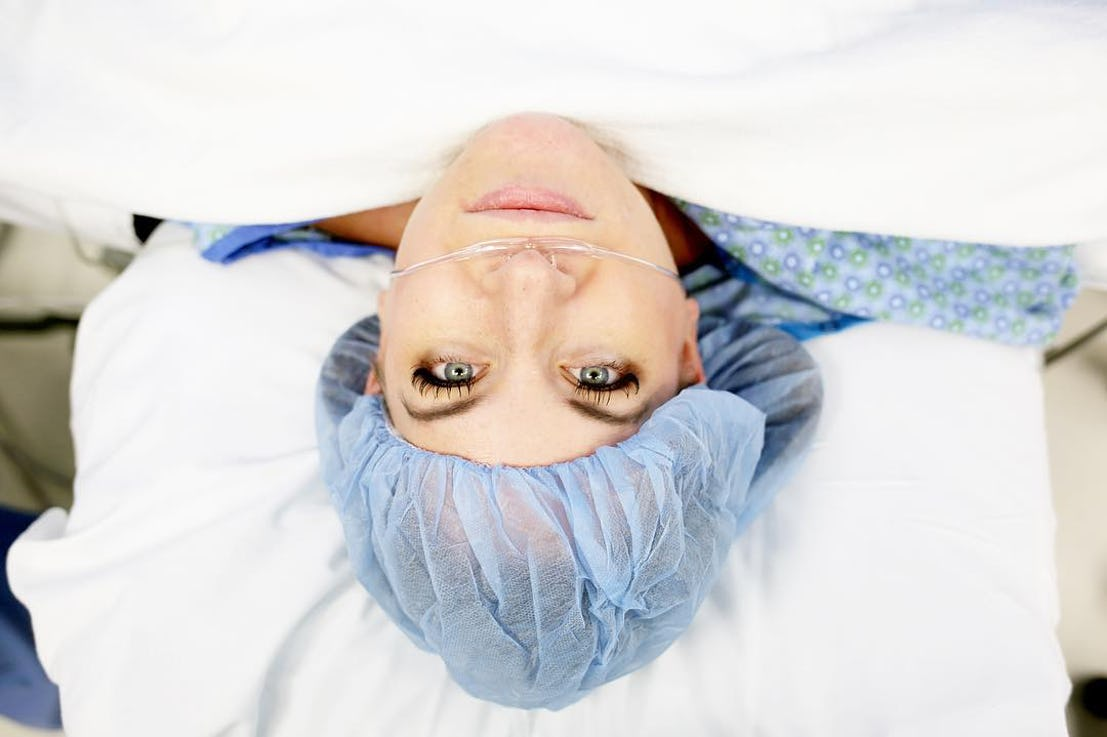
Now this one is tricky. Women who undergo scheduled c-sections with no major complications are usually awake for the whole procedure. On the other hand, those who are at a higher risk or require emergency c-sections might be given general anesthesia and zonk out for the whole process. For moms who do get to stay awake, a veil will be set up between her face and the doctors so she won’t have to see everything that the doctors are doing to her belly. She’ll get to listen to the doctors talking and maybe even have a conversation or two with them herself. Plus she’ll get a whiff of her skin being burnt as some doctors use lasers to make the incision in the abdominal wall to get to the baby.
6. EPIDURALS ARE THE REASON FOR EMERGENCY C-SECS
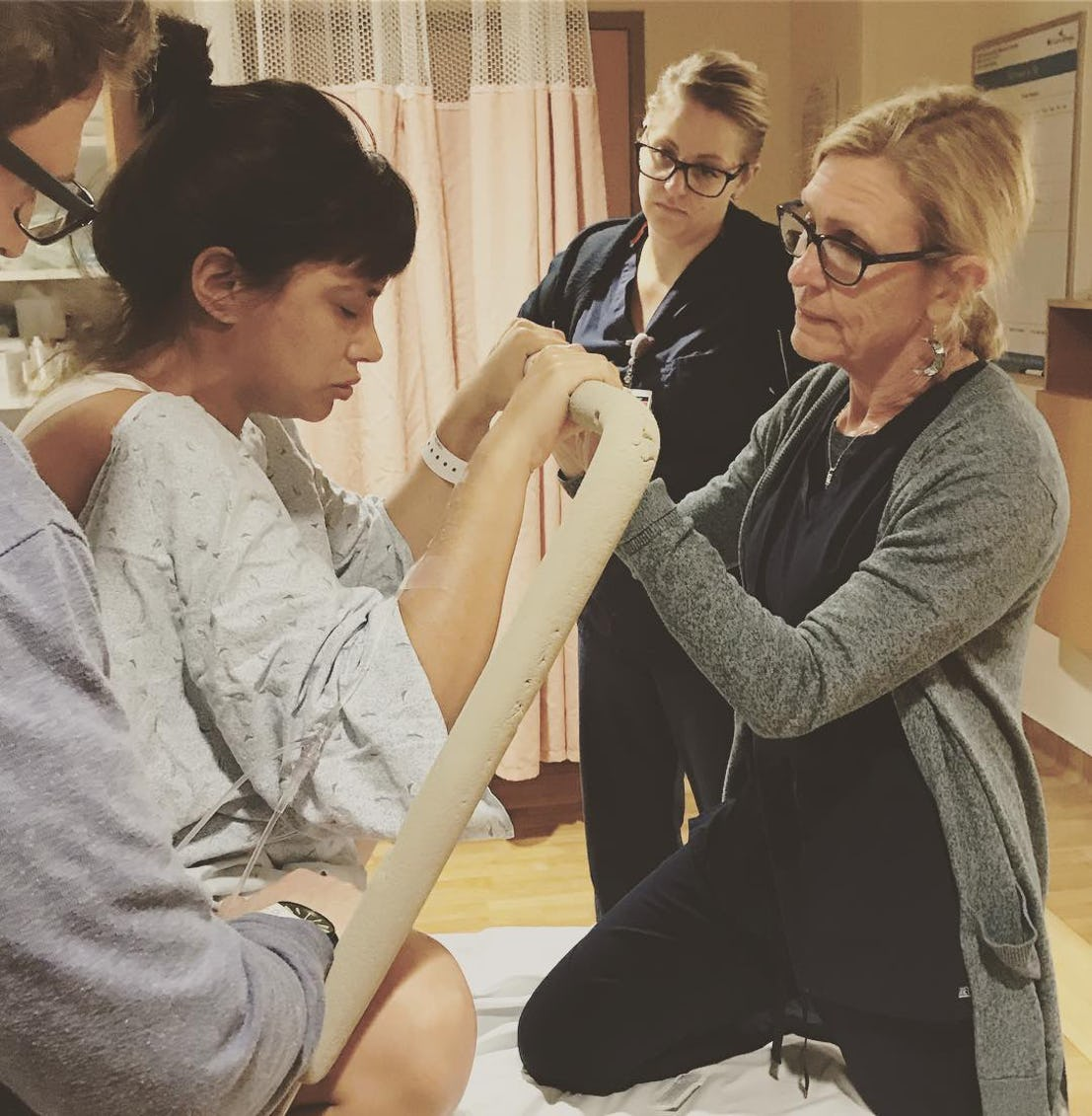
Epidurals are to women in labor what the happy pill is to most of us. It takes the pain of labor away and allows for a smoother delivery. That being said, the NCBI notes that epidurals come with various risks such as prolonged labor (women who can’t feel their lower bodies usually find it hard to push), increased incidences of maternal fever, as well as perineal trauma and fourth-degree tears in the vagina. With all these risks, one would think that epidurals contribute to a rising rate of emergency C-Sections but surprisingly, the NCBI reports that there is no conclusive evidence that supports this theory so moms can breathe a (small) sigh of relief.
5. NO SKIN TO SKIN CONTACT WITH BABY RIGHT AFTER A C-SEC
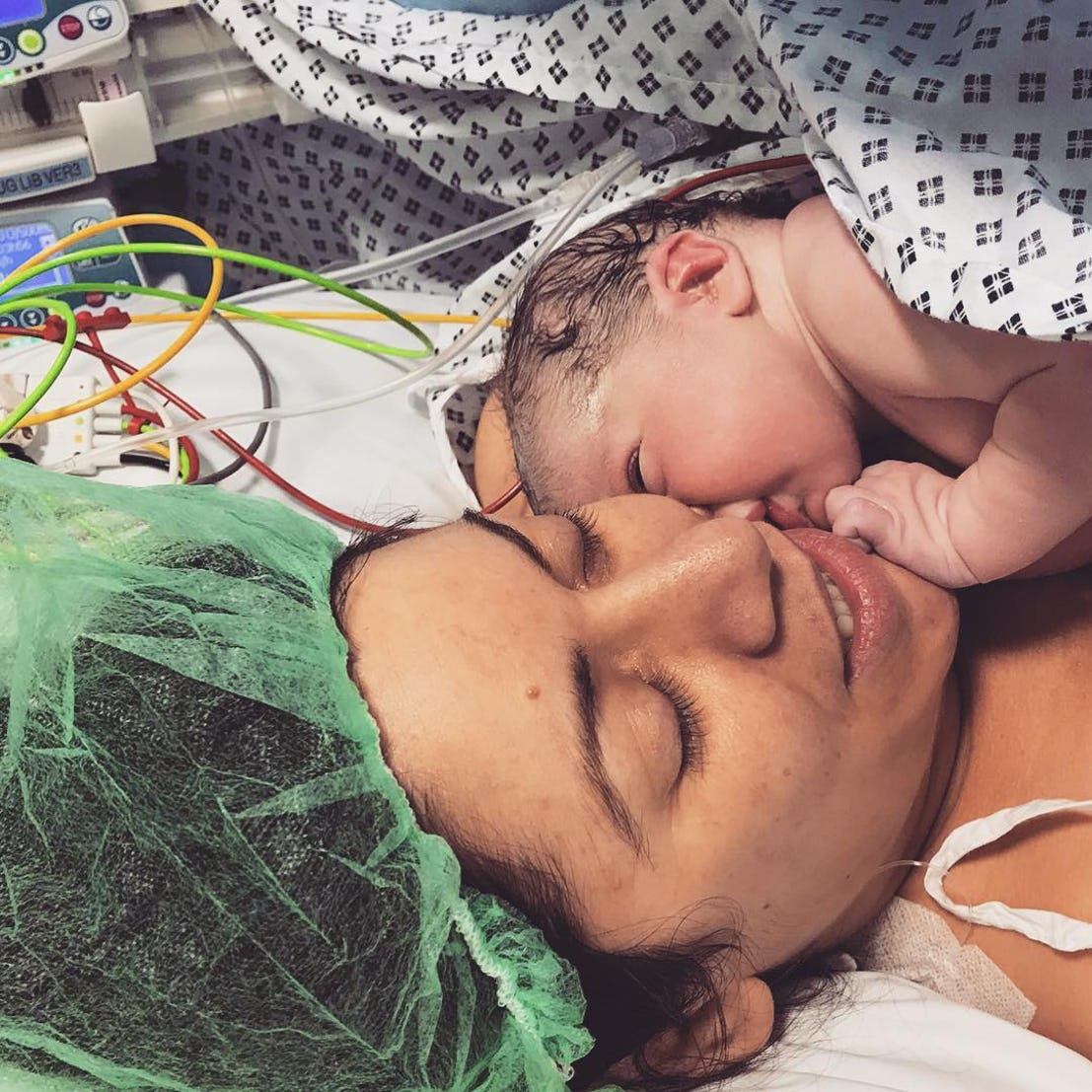
Traditionally, a mother is not allowed to hold her newborn right after the baby is pulled out of the womb via c-section. The baby has to be sent to the recovery room to be cleaned up and medically checked before being handed over to mom (after an agonizing 20-39 minutes wait). However, times have changed and these days, most hospitals allow c-sec moms to hold their babies right after the birth, the only exception being if baby has some health issue that needs to be tended to immediately. With the Baby Friendly Hospital Initiative launched by WHO and UNICEF, mom and baby can immediately bond via skin to skin contact while the doctors finish up with the surgery. So unless mom is totally zonked out, doctors don’t see why c-sec moms shouldn’t be able to hold their babies right away.
4. NO PHOTOGRAPHS ALLOWED DURING A C-SECTION
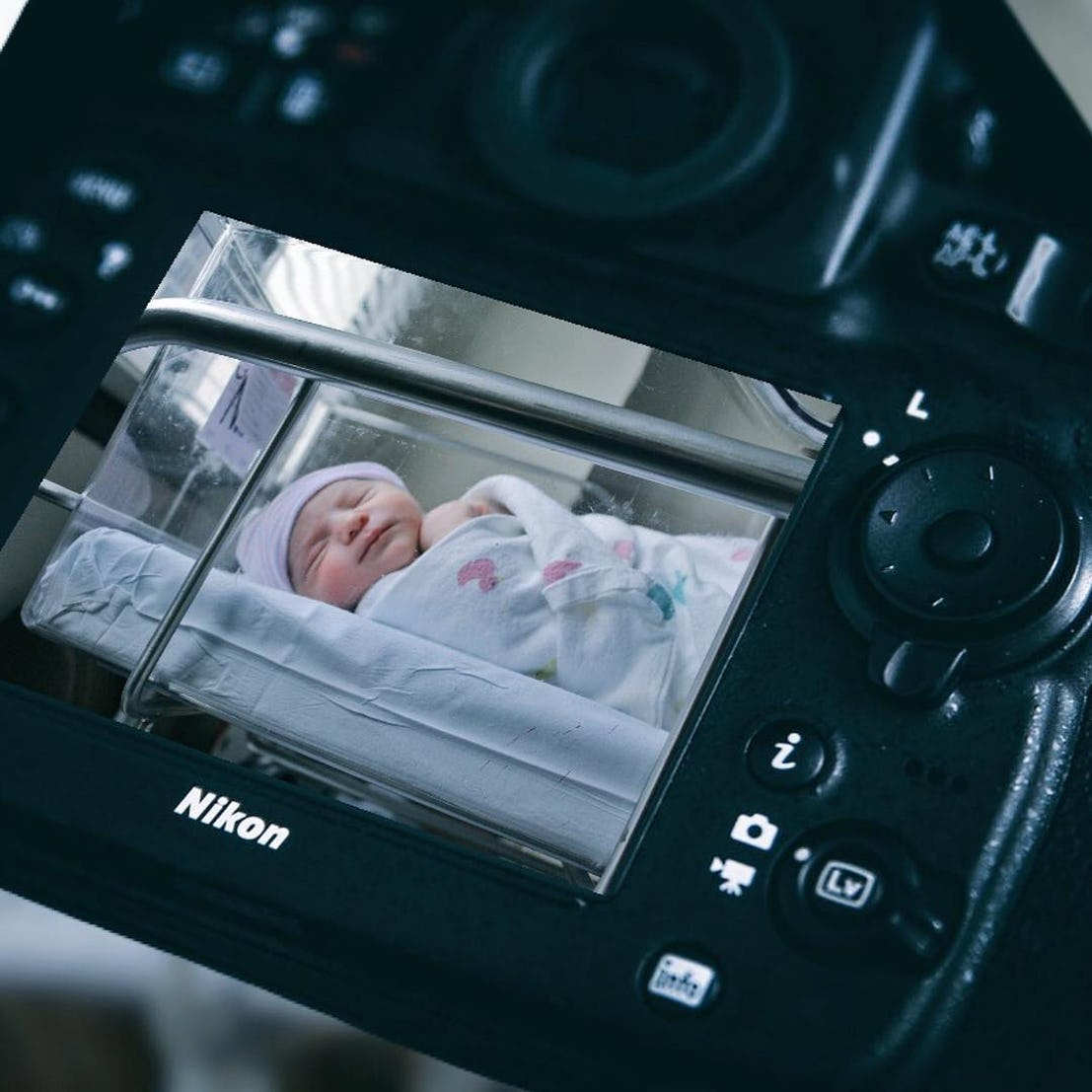
In the past, many things were taboo and forbidden. Women were not allowed to hold their babies immediately after a cesarean surgery, women were not allowed to bathe for a few days, women had to go into confinement for a whole month, just to name a few mind-boggling rules they had to follow. But history has turned into legend, legend into myth, and photographers who were once banned from taking memorable photos of a baby’s birth during c-secs are now very much welcome into the operating theatre (though they must meet terms and conditions set by the doctor of course).
3. INDUCTIONS INCREASE C-SECTION RATES
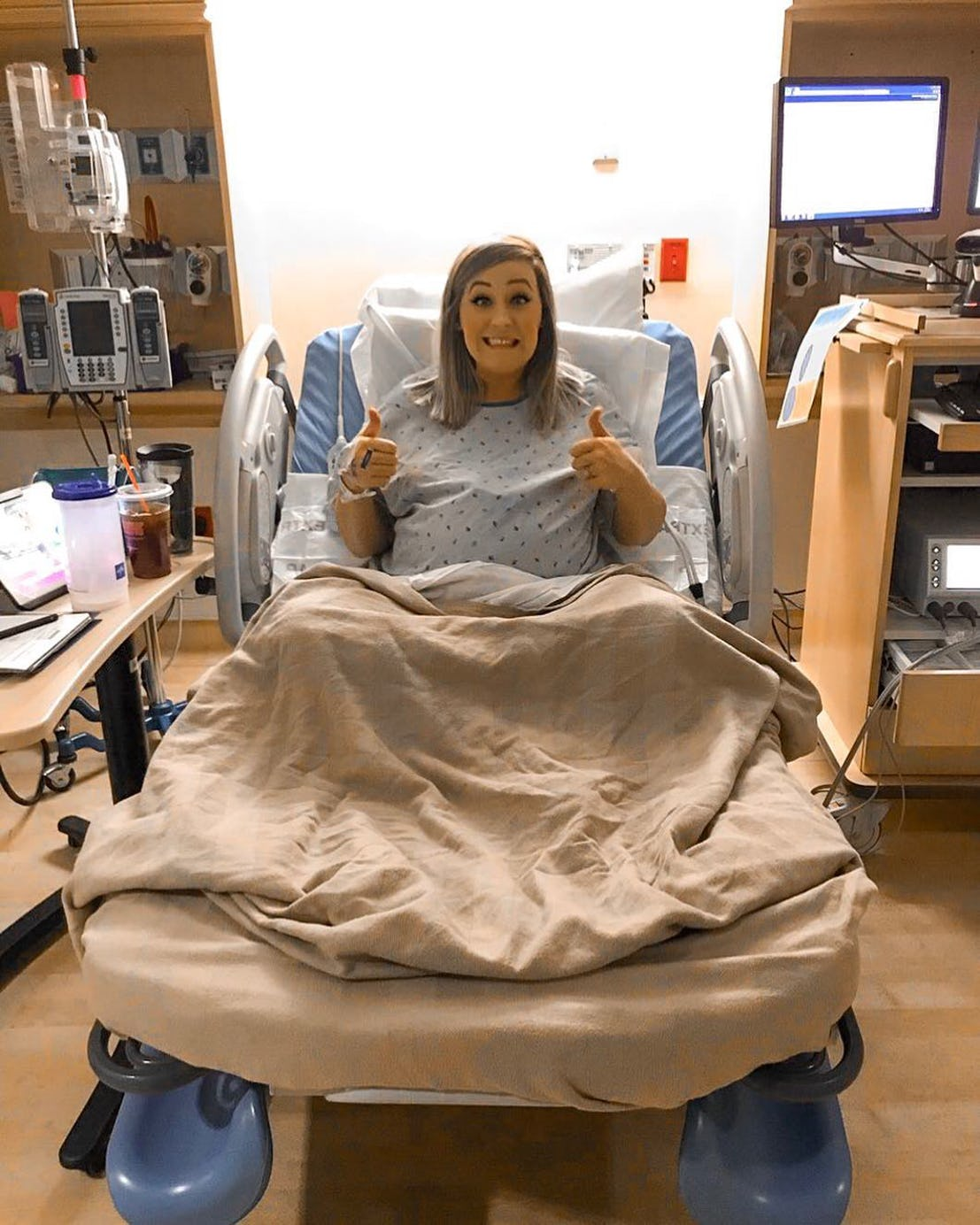
As with epidurals, many claim that inductions greatly increase the possibility of an emergency c-section. And as with the epidural myth, OBs and GYNs will raise their eyebrows at this claim and laugh their hats off before putting a reassuring hand on mom-to-be’s shoulder and tell her not to worry. After all, these are only myths and no conclusive studies were ever published to support such claims. So moms, if it comes right down to whether we want to opt for induction or take a risk and ‘wait it out’ then please do not let this myth get in the way of a healthy and smooth labor.
2. C-SECTIONS COST A FORTUNE

Having a baby can be rather costly. And while not all childbirths cost the same, many people expect to pay more for cesarean surgeries. This is not necessarily true. If mom and baby are insured then the cost should drop to a very comfortable amount. Other factors come into play, too. If no major complication occurs then mom will not have to stay in the hospital too long. Also, the hospital chosen plays an important role. According to bundoo.com, hospitals in the South are less expensive than the ones in the Northeast. Hint hint.
1. ALL CELEB MOMS HAVE HAD C-SECTIONS

While a majority of well-known celebrities have opted for a c-sec, it would be a lie to say that all of the moms in Tinseltown have had cesarean surgeries. Why? Simply because there is a small but growing number of A (B, C, D, E – you name it) Listers who have had vaginal births. Some have even opted for the much hyped-up water birth. Among the vaginal birth moms are former Baywatch beauty Pamela Anderson, supermodel Miranda Kerr, musically acclaimed Nelly Furtado, and reality TV star Kourtney Kadarshian. So there, the number of vaginal births isn’t exactly dwindling, is it?


